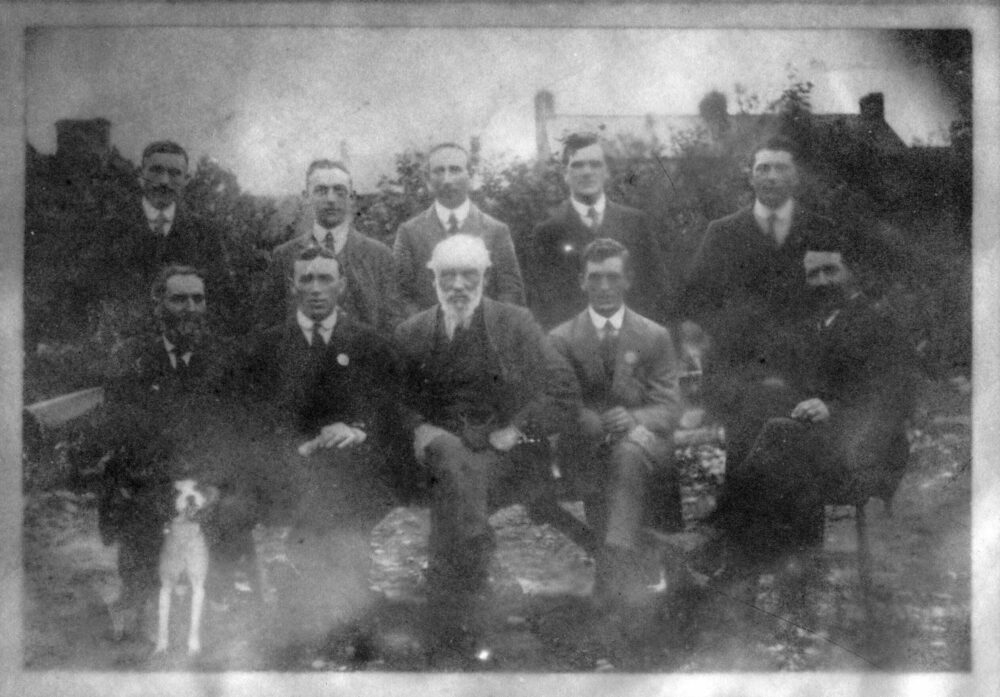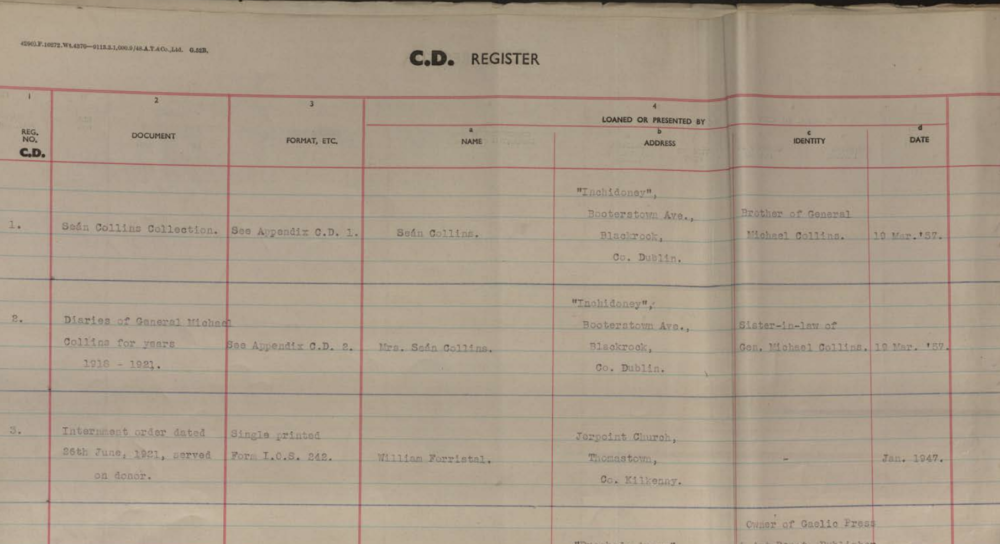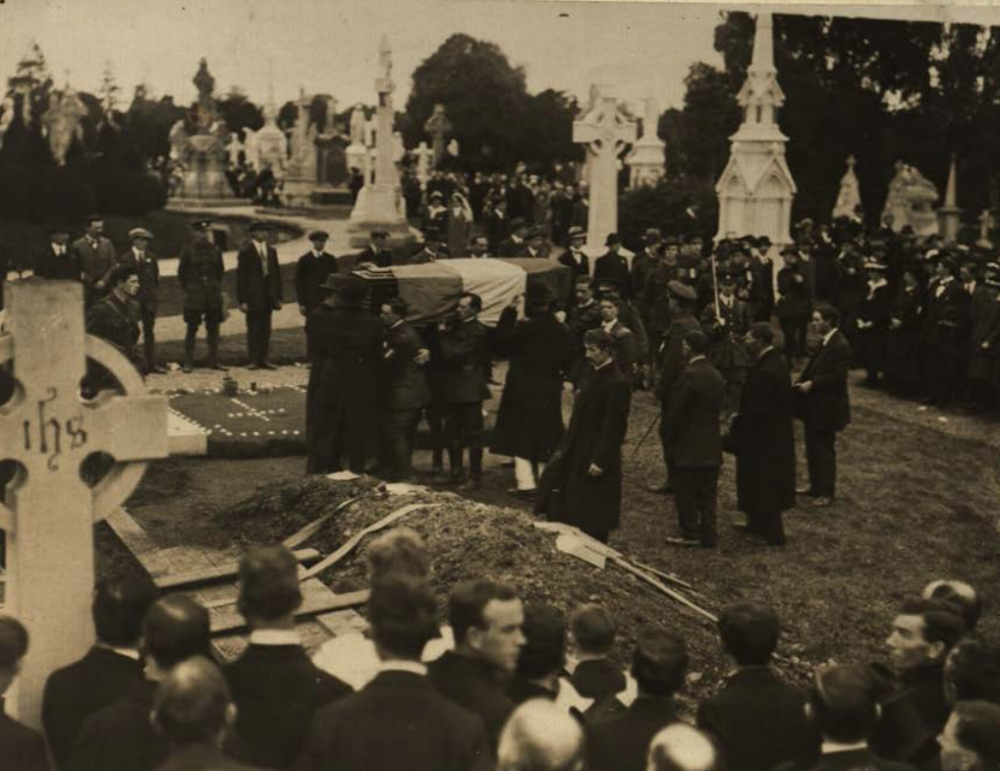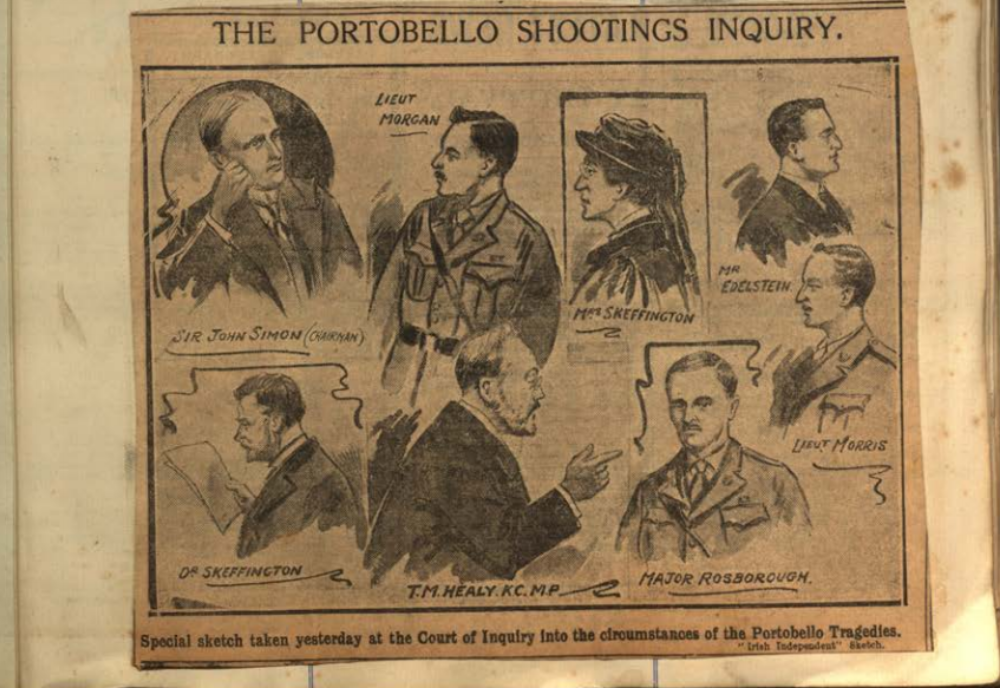Guide to the collection
The Bureau of Military History Collection, 1913-1921 (BMH) is a collection of 1,773 witness statements; 334 sets of contemporary documents; 42 sets of photographs and 13 voice recordings that were collected by the State between 1947 and 1957, in order to gather primary source material for the revolutionary period in Ireland from 1913 to 1921. The Bureau’s official brief was ‘to assemble and co-ordinate material to form the basis for the compilation of the history of the movement for Independence from the formation of the Irish Volunteers on 25th November 1913, to the 11th July 1921’ (report of the Director, 1957).
Along with the other major collection at Military Archives covering the revolutionary period from 1913, the Military Service Pensions Collection, the Bureau is among the most important primary sources of information on this period available anywhere in the world.
The Bureau was locked away in the Department of An Taoiseach for some forty-five years after the last statement was collected. In 2001, it was decided to transfer the Bureau to Military Archives and prepare it for release into the public domain. A team of archivists and support staff, under the direction of Commandant Victor Laing (former Officer in Charge of Military Archives) successfully prepared the collection for its launch in March 2003. Given that a duplicate set of the statements had originally been prepared by the Bureau, this set was transferred to the National Archives, to allow for greater public access.
This website allows people from all over the world unprecedented access to the Bureau on the internet for the first time
Abstractions from the BMH
The staff of the Bureau included army officers and civil servants, as well as a number of interviewing officers who travelled throughout Ireland during the lifetime of the Bureau in order to interview survivors of the period. The Bureau was assisted by a government-appointed Advisory Committee including Ricahrd Hayes, Robert Dudley-Edwards, G.A. Hayes McCoy and Theodore W. Moody.
Interviewing officers filled out an opinion sheet on each subject being interviewed. These interviewing officers sheets, originally abstracted from the Bureau under the terms of the National Archives Act, 1986 for the 2003 release, are now available in paper form at Military Archives. A very small number of abstractions (approximately three pages worth out of 36,000 pages of statements) were also made in 2003, under the terms of the National Archives Act, 1986, to prevent undue distress to persons who might have been living in 2003. Given the passage of time, these abstractions are now being reviewed and any material due for release into the public domain will be published on this website. Note also that the BMH ‘S’ files, the internal working files of the Bureau, are available for research in Military Archives also.
The BMH and the Civil War
While the BMH succeeded in collecting a huge and extremely diverse body of source material on the revolutionary period that is of international importance, it failed to secure the cooperation of many survivors of the 1913-1921 period who subsequently rejected the Anglo-Irish Treaty of December 1921, many of whom perceived it as a ‘Free State’ project. Consequently, the BMH does not include detailed statements from prominent Anti-Treaty survivors such as Tom Barry and others. On the State side, there was also a reluctance to seek witness statements and original records concerning the Irish Civil War in 1922/23, due to the prevailing political climate in Ireland during the 1940s/50s, some 20-30 years after the events recorded by the BMH took place. However, much of the material within the BMH does cover aspects of the Civil War, as many contributors submitted information that extended well beyond 1921.
The BMH Photo (BMH P) series
This series consists of some 400 photographs submitted to the Bureau, many of which are instantly recognisable as iconic images of the period. Certain photographs in the BMH, such as the aerial shots of 1916 Rising action sites, are not contemporary and were taken much later by the Air Corps.
The original BMH index for the photographs included basic descriptions of ‘groups’ of photographs from certain contributors.
Alternatively, you can search the BMH photograph series by typing your search terms in the box below. For basic guidance on how to search effectively, please see some tips for effective searching.
The BMH Contemporary Documents (BMH CD) series
This series consists of some 2,500 documents submitted to the Bureau, many of which are instantly recognisable as iconic documents of the period. These documents were often handed in along with a contributor’s statement, and provide a fascinating insight into many aspects of the revolutionary period. Letters; memos; (now) rare publications; pamphlets; propaganda material; drill manuals; posters and even contemporary currency are included in this series.
There were originally two BMH indexes for the contemporary documents: one included basic descriptions from each contributor, for easy reference, while the larger index gives a detailed description of each item.
A full PDF guide to the BMH, produced for the original launch of the BMH in 2003, can be downloaded here.
Historical Essays
To help to contextualise the BMH and its importance as a source for Irish history, we have included academic essays on this site from two historians.
Dr. Eve Morrison has carried out extensive research on the BMH and its internal workings and her essay is available here.
Professor Diarmaid Ferriter’s essay on the BMH, originally published in the Dublin Review for the launch of the BMH in 2003, can be accessed here.
Digitisation
Why not digitise the BMH CD collection?
Digitisation can be a costly and time-consuming process. The Bureau of Military History Contempory Documents series in particular contains a huge amount of outsized, delicate and special media items that would require enormous care, financial resources and time to digitise in a satisfactory way. As a sample of how rich the BMH CD series is, we have digitised the 1916 press cuttings. For the foreseeable future, the vast majority of collections will be available in paper form in the reading room only.
Military Archives, like similar archives services throughout the world, will continue to digitise collections of major interest or importance, sometimes to ensure that wear and tear on original records through excessive handling in our reading room is prevented.
Funding
In 2011, the Department of Arts, Heritage and the Gaeltacht generously granted funding to Military Archives and the National Archives to digitise the Bureau of Military History 1913-1921 (BMH) material and make it available online for the first time. The BMH had originally been launched in paper form in early 2003, but had never been available to a wider audience; researchers had to travel to Dublin to visit Military Archives or the National Archives, where duplicate sets of the witness statements are held. Funding was granted following a successful joint application from both institutions, which highlighted the sustained interest in this collection and its continued relevance as we enter the ‘decade of commemorations’ for the revolutionary period in Ireland.
The Bureau is the largest resource for individual testimonies for the revolutionary period 1913-1921 currently in the public domain and is one of national and international significance, attracting interest from a variety of researchers at home and abroad.
Eneclann Ltd. was contracted to oversee the careful digitisation of the material, some of it in fragile condition. Roomthree Design, who were also contracted for militaryarchives.ie, developed the website.




